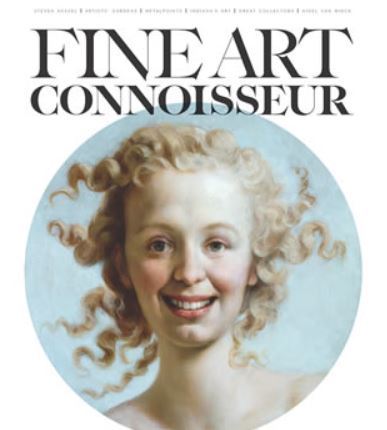
Predictably, not everyone is happy.
Apparently the imminent rise of figuration has enough momentum that specu-collector/dealer Stefan Simchowitz felt the need to post this sarcasm-laced warning on his Facebook page over the weekend:
I love this new trend of figurative painting now. I mean, what a bunch of baloney media, collector driven pivoting, in reaction of Walter Robinson's utterly inane Zombie Abstraction, pseudo analysis of the state of the art. Well, every idiot who sidelines as a collector is after a painting with a figure in it. The circus has a new act, till the next intermission, and Miami will be that next act.Simchowitz has a point: art world fashions can fade quickly, but I would argue that figuration, with its very, very deep roots may be rested and ready to surprise all of us. Schools like the New York Academy of Art and numerous ateliers have been graduating some extraordinarily skilled students in the past few decades and they (and their professors) are on the rise.
Keep in mind though, there is a really, really broad range of what one might call "figurative" or "representational" art and the news release for UNREALISM on the Gagosian website makes it clear that "academic" figuration will not be part of the mix Miami: "The artists featured in UNREALISM work within the figurative canon without becoming academic."
Really? There is nothing "academic" about the work of John Currin, whose "Rachel in the Garden" appeared along with the NY Times article? His work also appeared this May on the cover of Fine Art Connoisseur, which is the blue blazer "conservative" foil to ArtForum. Don't tell me there isn't some weird convergence in the air...
Speaking of magazines, it should be noted that the most widely read art magazine in the United States is Juxtapoz -- which features a range of representation from "Lowbrow" to Odd Nerdrum -- with a circulation of 127,000 more than twice that of ArtForum. Add to that: Jutapoz's star attraction -- Mark Ryden, the "Prince of Lowbrow" -- stands poised to burst past the gatekeepers and enter major museum collections soon.

Outsider status can work, as can a reliance on subject matter that is "deconstructed" in relation to social, sexual and political issues. Perversity is good, and so are self-conscious strangeness, obsessiveness, and irony. Warholian strategies involving mechanical and technological methods of image making are helpful. Conceptualism, which I think tends mixes with representation very lamely, can also get you in the front door of the avant-garde academy. Sadly, a connection to wealth and/or celebrity can work too.Currin's work is apparently "perverse" enough to be blue chip, but it is also "skilled" enough for Fine Art Connoisseur. I find that confusing: in a good way. Looking over the list of 50 artists included in UNREALISM is a confusing experience (Urs Fischer???) but the confusion is perhaps understandable since the show was obviously culled from pre-credentialed, mid-career or better gallery favorites. There are, as you likely know, scores of galleries and artists who have already been showing figurative art that has generated the "buzz" underneath this development, and it goes without saying that some of the very best figurative artists around won't be represented in UNREALISM. Next year, things could be quite different...
Calling yourself a "representational" or "figurative" artist right now is rather like identifying yourself as a "Christian" or a "Muslim." In other words, what those terms mean is so broad that they seem to serve as mere covers for an impossibly broad range of ideas and values. Why you make on your easel will have to be your actual statement of values. Even if you are a "realist," and you feel carefully screened out of UNREALISM, the rising tide of figuration may already be starting to float your boat. Maybe you won't have to sit at the fuddy-duddy table forever.
What in fact may be happening is that the top of the art market is beginning to figure out what the blogosphere has been saying for some time, and that is that there is a new respect for skill -- another very broad term -- and a hunger for imagery. Now the market just has to figure out that there is also a hunger for authenticity and sincerity, but I'm not holding my breath on that count. Whatever happens, figuration, representation -- whatever you want to call it -- is going to be hybridizing itself into some unexpectedly wonderful art in the coming years.
"I've seen a lot of prejudice against representational art since I began my career," says L.A. artist F. Scott Hess. "I would say that in the last 40 years it has never been better than it is now... We have made representational art for 40 thousand years. Gagosian is getting on the bandwagon a little late."
Interesting times, don't you think?
